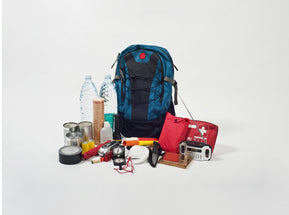THE SCIENCE BEHIND HOME DISASTER PREPAREDNESS KITS

HELICOPTERS GOT TO Wilmington, North Carolina, after a day of isolation; Hurricane Florence made landfall there, and the city, with one foot in the Atlantic and the other in the Cape Fear River, soon became an island. Its main roads underwater, Wilmington went without help until boats and choppers reached it with medical supplies, water, and food.
But it only took a day. According to the federal government, that’s actually pretty fast. Since the terrorist attacks of September 11, 2001—or at least since Hurricane Katrina hit New Orleans in 2005—the government has urged all of us, every individual, to be ready to go without help for at least three days in the wake of a disaster. You’re supposed to have kits in your cars and at home … maybe not the shopping cart from The Road, but just, like, be ready, OK? And now with Florence a waning threat but with fires and storms an apparently permanent part of Earth’s changed climate (and earthquakes, volcanoes, and terror always possible), the rules seem to be shifting a bit again. The new message: Be ready for 14 days on your own. Two weeks.
That’s a lot of supplies to buy and store—especially when the whole idea of home disaster preparedness kits is based much more in conventional wisdom than actual data. On the other hand, one might save your life. Good luck, everyone!
Recommendations for what’s supposed to go in these kits vary, but basically it’s a gallon of water per person per day and food, too, plus medicines, blankets and sleeping bags, maybe a tent, extra eyeglasses, lots of batteries, something to make light with, something to make fire with, maybe a hand-cranked radio.


